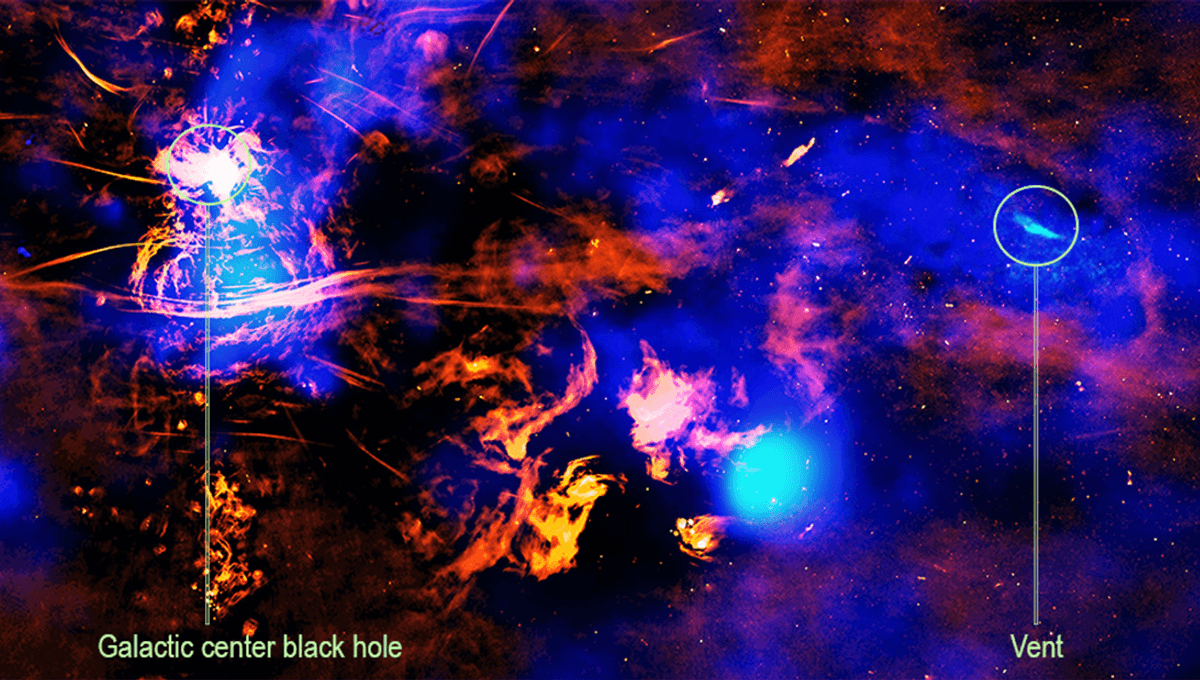
As we search the skies with increasingly more powerful telescopes, we have discovered plenty of things that our best models of the universe have not predicted, from Odd Radio Circles (ORCs) and Kýklos, to (potentially) oversized galaxies in the early universe.
One particularly gigantic surprise was first spotted by the eROSITA X-ray space telescope, a Russian and German project to map the universe in X-rays. In 2020, the telescope revealed a ginormous structure lying somewhere towards the center of our galaxy.
The problem was that the structure, resembling a giant bubble emanating from… something, was at an unknown distance. It could have been either a giant local structure of 102 parsec scale nearby but coincidentally in the direction of our galaxy’s supermassive black hole, or an absolutely humungous 104 structure by Sagittarius A* itself.
Recent studies have made it seem much more likely that we are looking at a truly enormous structure towards the center of the galaxy, appearing strikingly similar to “Fermi bubbles” discovered by the Fermi Gamma-ray Space Telescope. The favored explanation so far is that the “bubbles” are the result of a huge amount of energy released at the galactic center (GC).
“Rather than being an independent feature, the [Lotus Petal Cloud] composes the northern eROSITA bubble together with the [North Polar Spur]. Considering that the two distant features (NPS and LPC) span an angle of ∼90°, the bubble composed of them should be distant and giant, with a scale of a few kiloparsecs,” one recent study published in the Astrophysical Journal Letters explains. “The most plausible model for such a structure is a giant bubble rooted in and blown by episodes of energy release at the GC.”
As yet, we need to observe these bubbles a lot more to know the precise mechanism, but astrophysicists suggest that they are fed by “exhaust vents”.
“We suspected that magnetic fields are acting as the walls of the chimney and that hot gas is traveling up through them, like smoke,” Scott Mackey, a PhD student at the University of Chicago and lead author of a study on the subject, explained in a statement. “Now we’ve discovered an exhaust vent near the top of the chimney.”
According to that study, as a star falls into a black hole, superheated dust travels up this “chimney” at high speeds before exiting the “vent” at the top, some 700 light-years above the galactic center. As it travels, the gas collides with cooler gas, creating shock waves and bright X-rays picked up by Earth’s telescopes.
“The sharp boundaries of these bubbles most likely trace shocks caused by the massive injection of energy from the inner part of our Galaxy into the galactic halo,” Peter Predehl, first author of another study published in Nature, explained in a separate statement. “Such an explanation has been previously suggested for the Fermi bubbles, and now with eROSITA their full extent and morphology has become evident.”
More study is needed to see the precise mechanism of these strange bubbles, and what impact they have on the evolution of our galaxy and others.
Source Link: Giant Bubbles Appear To Be Coming From Our Galaxy's Supermassive Black Hole